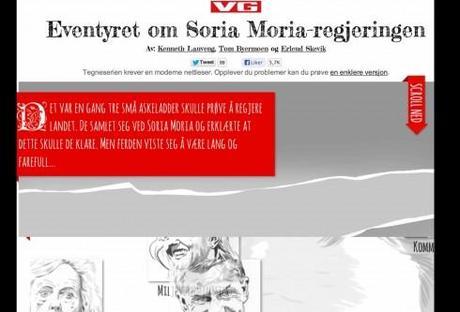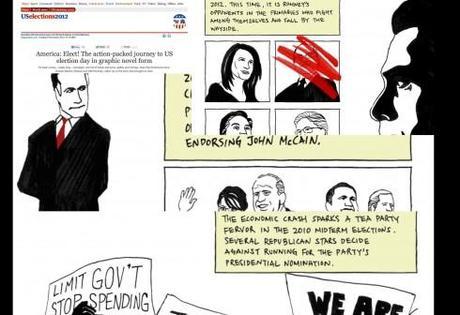TAKEAWAY: The New York Times’ Tomato Can Blues is the latest of the big multimedia storytelling packages and what a great example of an excellent narrative with illustrations that take us back to the spirit of comic books and picture and/or graphic novels popularized since the 1940s.
Those multimedia storytelling examples are getting more focused, easier to follow and hitting the spot. The latest example is The New York Times’ Tomato Can Blues. .
It has a great story, well written and segmented to be consumed as we would a collection of short stories. Tomato Can Blues is the story of a real gun shop robbery and the search for a suspect who many thought was dead. The New York Times published this fabulously illustrated version of the story, pieced together from more than 50 interviews of people who know Charles Rowan, the heavyweight cage fighter who went by the name “Freight Train,“ and who was eventually arrested and has since pleaded guilty to armed robbery.
Tomato Can Blues even has star power via Bobby Cannavale, a Broadway actor and now Emmy 2013 winner for his role in Boardwalk Empire, who lends his voice to an audio narration.
But the visuals that steal the show (without robbing from our attention to the narrative by Mary Pilon) are the illustrations by Attila Futaki. While I am not sure what I should call the technique used here, I guess it would be safe to refer to it as “parallax illustration,“ which takes advantage of the popular web design technique of parallax scrolling (in which part of the page moves at a different speed than the background, as in Snow Fall and many similar designs). Or, as Reed Reibstein, our art director/project manager, suggests: “Maybe you could call it 2.5D illustrations, referring to their status in between 2D and 3D.“
And, because multimedia storytelling such as Tomato Can Blues is only in its infancy, it is not just very appropriate to be lacking the proper terminology, but also to have questions such as the one in a Tweet by Marc Lacey, associate managing editor of The New York Times, who asked:
Graphic novel? Reported article?
I would add that Tomato Can Blue has a little bit of the documentary film and the noir fiction as well. The illustrations offered that bit of retro feel to the experience.
It makes me think of the reason I always say that these are the best times to be a storyteller.
But these multimedia projects would never get off the ground without a major emphasis on planning and collaboration.
Best Tweet about Tomato Can Blues
Matthew Rosenberg Foreign Correspondent,** New York Times**
Tomato Can Blues - Great story by @marypilon & great illustrations. Worth reading on a big screen, not phone nyti.ms/1a0NGTX @nytimes
(I agree, although I did not even try to read it on my iPhone, but I would not recommend it)
Of related interest:
The New York Times’ “Tomato Can Blues”: Lovely editorial design, kinda boring ads -
http://www.denversun.com/index.php/sid/217187053/scat/45d771c7290844e9
Journalists’ comments on Tomato Can Blues
http://muckrack.com/link/2YIR/tomato-can-blues
An interview with artist Attila Futaki
http://multiversitycomics.com/interviews/artist-alley-attila-futaki-interview/
The producers of Tomato Can Blues at the Times:
Produced by Xaquín G.V., Jon Huang, Sam Manchester, Rumsey Taylor and Josh Williams.
Don’t miss these
Two other examples of multimedia storytelling that show creativity, innovation and great use of visuals to tell the story.

VG+, Norway
Just before the recent elections
http://www.vg.no/spesial/2013/valg/tegneserie/

The Guardian, UK
The American Presidential elections
http://www.theguardian.com/world/interactive/2012/nov/06/america-elect-graphic-novel

